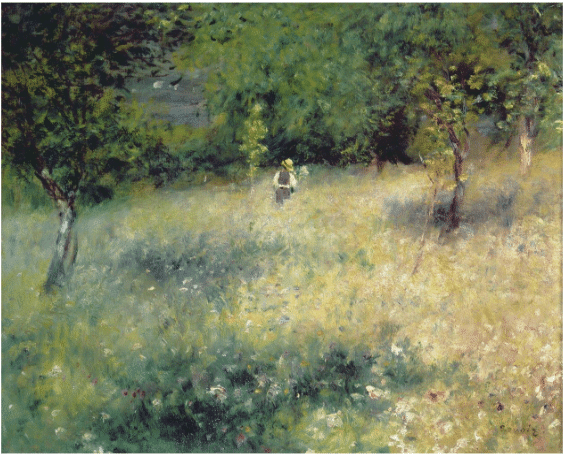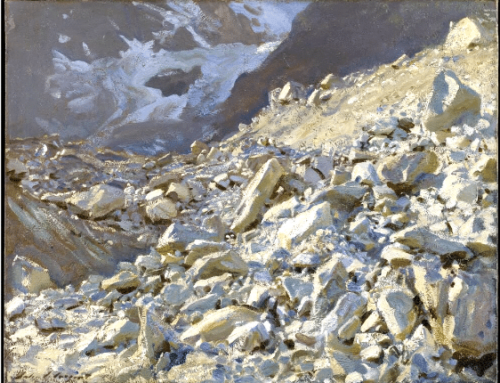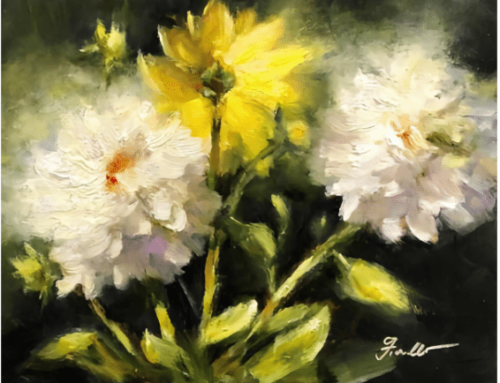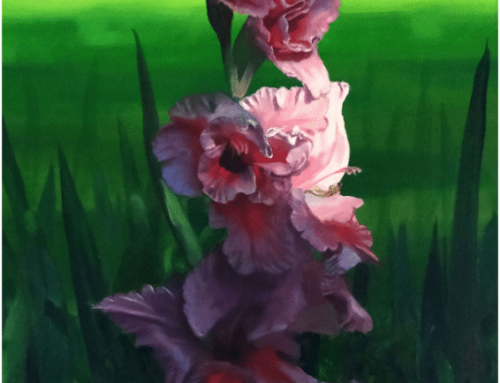What Makes This Painting Great? An occasional series all about analyzing what makes paintings beautiful, iconic, memorable, or effective.
Painters, beginners and masters alike, make leaps and bounds by studying creative triumphs of the art. What kind of principles, techniques, compositional designs or color choices have artists used to create your favorite paintings?
While Pierre Auguste Renoir is better known for his figure paintings, he was also a lover of nature and an accomplished painter of landscapes. Created mostly during the first decade of Renoir’s career, his landscape paintings were inventive and original; they resonate with a remarkable vitality and freshness of vision that would become central to the development of Impressionism.
The painting we’re looking at today is Renoir’s “Spring at Chatou,” painted outdoors, somewhere between 1872 and 1875, when the artist was in his early 30s.
Why should I care about this painting?
It’s the softness – the tenderness, and the dreamy soft focus in which Renoir envelops the scene, that wins us over in “Spring at Chatou” as well as in many of Renoir’s paintings. The painting as a whole reads like the memory of a perfect day.
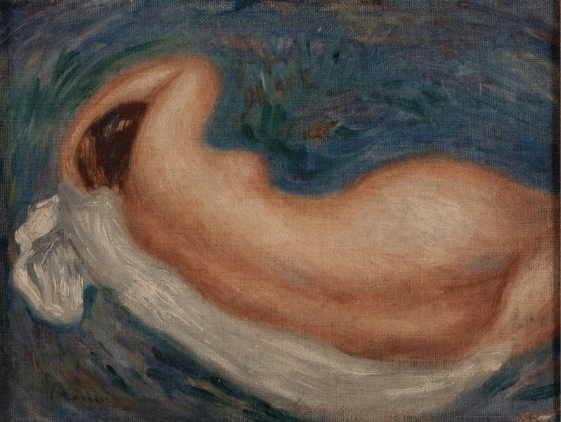
Renoir, Reclining Nude, 1892
Unlike his more “classical” portraits and nudes, Renoir would have considered “Spring at Chatou” something rather new, namely a “pure landscape.” First coined by fellow Impressionist-to-be Camille Pissarro (1830–1903) in 1874, the term “pure landscape” indicated a landscape painting in which figures played a minimal role or were absent altogether. Pure landscape painting came to prominence in the nineteenth century against the backdrop of the Industrial Revolution, when the meaning and importance of nature were changing significantly. There is an element of nostalgia here for a beauty even then increasingly absent from a rapidly mechanizing world.
Ultimately, “Spring at Chatou” is an ode addressed to the experience of fleeting beauty. Though it’s framed like a photo, the image moves us far more than a modern photographic capture ever could. Nature’s never that dazzling, harmonious, and colorful all at once except in person – or on the canvas of a master.
How’d He Do It?
Like many of Renoir’s landscape scenes from the 1870s, “Spring at Chatou” focuses on the effects of light and color over concrete details. The artist covers thinly painted, softly blended areas of wet color with smaller, even at times staccato, dabs and dots of thicker paint.
This “points of light” technique does two remarkable things: on one hand it mimics how the human eye registers the shifting colors, lights, and contrasts in nature. At the same time, it produces a sort of dazzling, abstract effect: scattered bits of painted color dance across the canvas as if detaching themselves from the things they represent through an abundance of energy and exuberance.
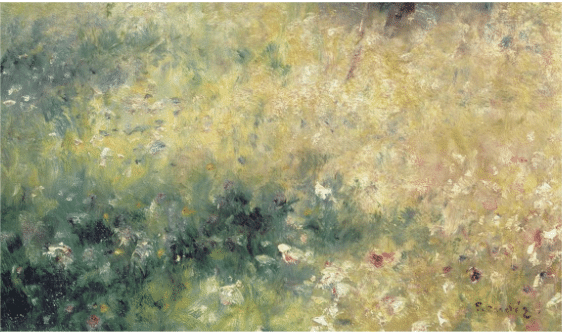
close up of brushstrokes in the foreground of Renoir’s “Spring at Chatou”
Looking at the composition, we see the artist has divided the foreground light just about evenly. He has cool shadows on the left and warm lights on the right. This balanced division chimes well with the in-betweenness of the spring season – the halfway point between winter and summer.
Notice how Renoir matches his figure’s hat and shirt with the colors and temperatures of the orchard grass in the middle ground. The effect is to downplay contrast, evoking instead a rare moment of harmony between the human and natural worlds. Until we look away, we all get to be that figure, waist-high in a wash of tall sunny grass and blossoms like weightless confetti.
Renoir also deliberately kept to a minimum any anecdotal narrative or symbolism. We don’t need to know who this is or what they’re doing. By placing the anonymous man, face hidden, where he does, the figure neither dominates nor is dominated by nature, but integrates within it.
This painting is all feeling: An anonymous patch of the world shines through the lens of a sympathetic eye and brush, and for a moment, in Wordsworth’s words, “with an eye made quiet by the power/Of harmony, and the deep power of joy,/We see into the life of things.”
“Spring at Chatou” was painted by an artist intent on revealing and preserving nothing more – and nothing less – than the exquisite softness and beauty of a quiet spring day.
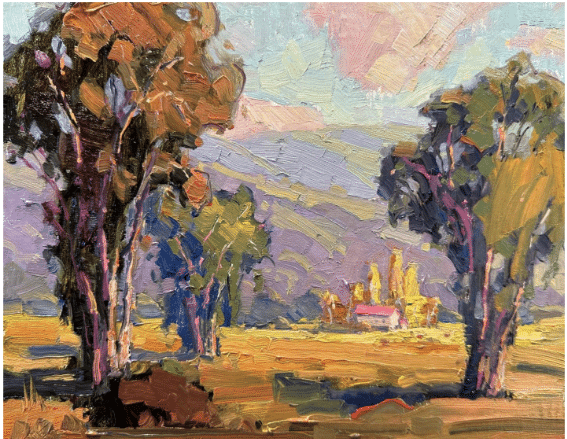
Debra Huse, Colorful Vista, 8 x 10 in. Debra is a contemporary artist who has perfected (and teaches) a bold and colorful style influenced by Impressionist landscape painting.
Variants of the Impressionist style remain among the most popular approach to painting landscapes today. A host of videos that take you step by step through the technique are available here.
From a Surfboard to a French Easel: This Artist Combines Plein Air Painting with the Outdoor Life
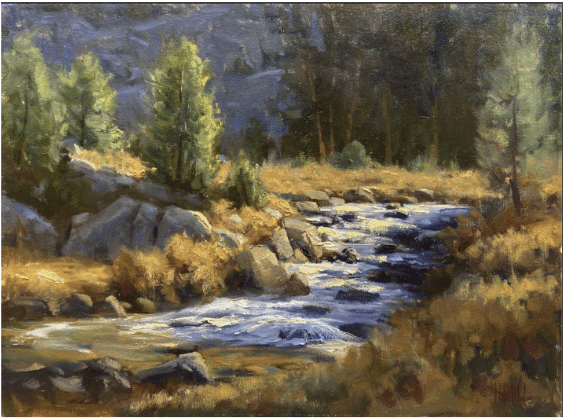
Scott Hamill plein air in oil
Scott Hamill has always been an “outdoor” sort of guy. He feels especially lucky to have found a way of combining artistic expression with his love for being out in nature by working in the plein air tradition. Scott will be an instructor during this year’s Plein Air Convention & Expo in Tennessee’s Smoky Mountains May 20-24, 2024.
As a native Californian, Scott has lived most of his life in and around the ocean and mountains. Scott has “developed a strong connection to the water and land while surfing along the Pacific coast and fishing, backpacking and canoeing in the Sierra Nevada Mountains,” he says. Scott’s goal is to share this connection with those who view his art.
In his plein air paintings Scott hopes to capture the mood or essence of a place and allow the viewer to experience the beauty of our natural world. He uses a limited palette of colors in oils, which helps harmonize the painting as well as adding the challenge of mixing all other colors from these few.
Scott’s painting gear fits into a backpack, which allows him the freedom to get off the beaten path while scouting for locations to capture on canvas.
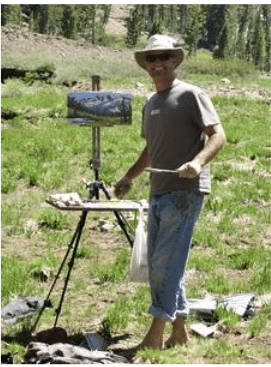
Scott’s paintings have been juried into exhibitions and shows throughout the country. He is honored to have his work in private collections throughout the U.S. and abroad including decorating the Lodge at Pebble Beach and their newly built Fairway One project.
Scott also enjoys sharing his painting experience and techniques and teaches several plein air painting workshops throughout the year.
He lives near Santa Cruz, California with his wife and two children.
PACE, The “Woodstock of Plein Air”
Every year, hundreds of the world’s most enthusiastic outdoor painters gather at the Plein Air Convention & Expo (PACE) to learn painting techniques from the world’s top artists. They come to see what’s new, what’s hot, and what’s working RIGHT NOW in art marketing. It is the largest gathering of plein air painters on the planet and there is no other event like it. The “Woodstock of plein air” is different every year, yet every year there are artists at PACE who are, or will become, some of the greatest artists of our time… and you get to meet and mingle with them.
Learn more about PACE.

